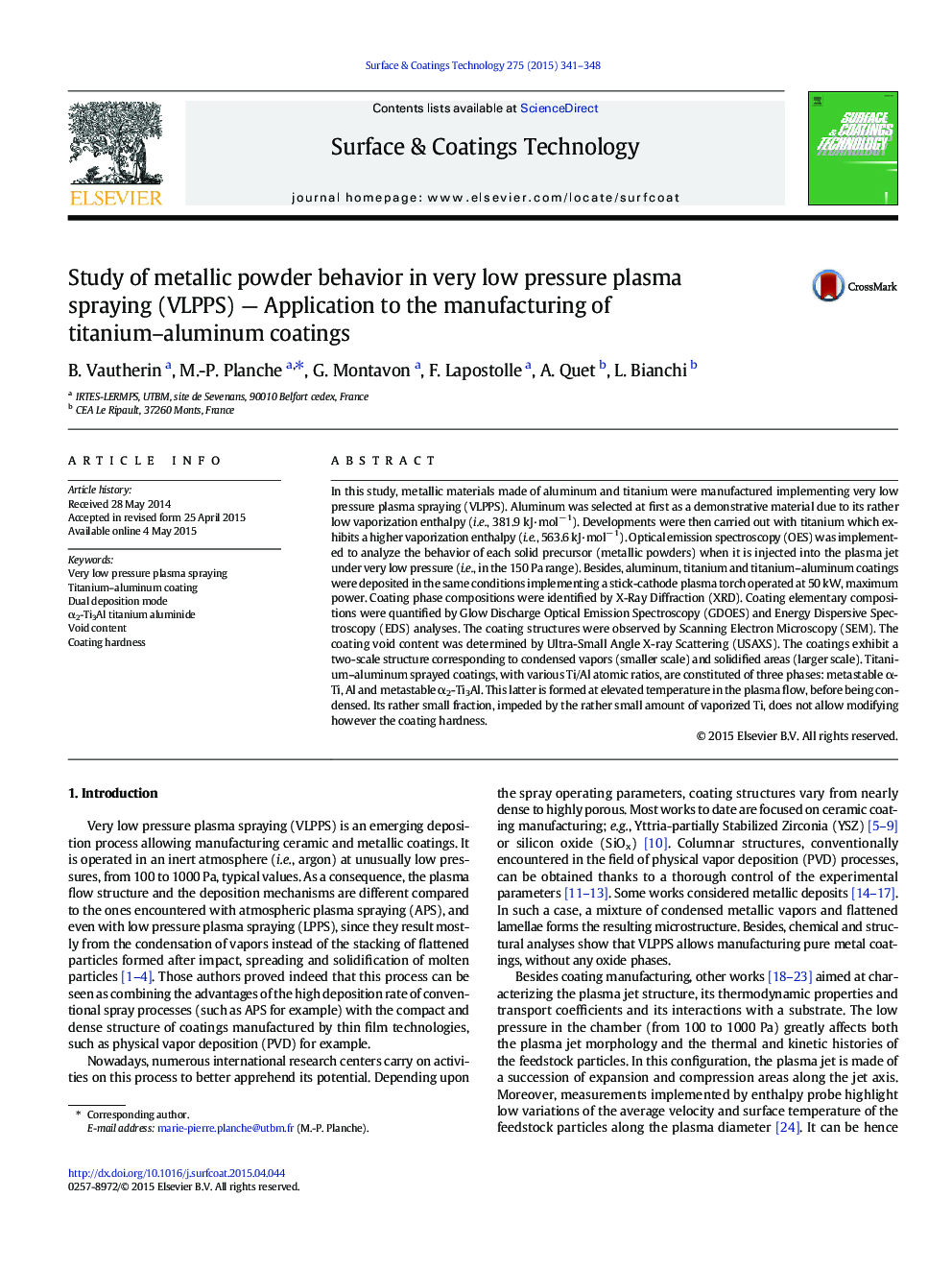| Article ID | Journal | Published Year | Pages | File Type |
|---|---|---|---|---|
| 8026444 | Surface and Coatings Technology | 2015 | 8 Pages |
Abstract
In this study, metallic materials made of aluminum and titanium were manufactured implementing very low pressure plasma spraying (VLPPS). Aluminum was selected at first as a demonstrative material due to its rather low vaporization enthalpy (i.e., 381.9 kJ·molâ 1). Developments were then carried out with titanium which exhibits a higher vaporization enthalpy (i.e., 563.6 kJ·molâ 1). Optical emission spectroscopy (OES) was implemented to analyze the behavior of each solid precursor (metallic powders) when it is injected into the plasma jet under very low pressure (i.e., in the 150 Pa range). Besides, aluminum, titanium and titanium-aluminum coatings were deposited in the same conditions implementing a stick-cathode plasma torch operated at 50 kW, maximum power. Coating phase compositions were identified by X-Ray Diffraction (XRD). Coating elementary compositions were quantified by Glow Discharge Optical Emission Spectroscopy (GDOES) and Energy Dispersive Spectroscopy (EDS) analyses. The coating structures were observed by Scanning Electron Microscopy (SEM). The coating void content was determined by Ultra-Small Angle X-ray Scattering (USAXS). The coatings exhibit a two-scale structure corresponding to condensed vapors (smaller scale) and solidified areas (larger scale). Titanium-aluminum sprayed coatings, with various Ti/Al atomic ratios, are constituted of three phases: metastable α-Ti, Al and metastable α2-Ti3Al. This latter is formed at elevated temperature in the plasma flow, before being condensed. Its rather small fraction, impeded by the rather small amount of vaporized Ti, does not allow modifying however the coating hardness.
Keywords
Related Topics
Physical Sciences and Engineering
Materials Science
Nanotechnology
Authors
B. Vautherin, M.-P. Planche, G. Montavon, F. Lapostolle, A. Quet, L. Bianchi,
